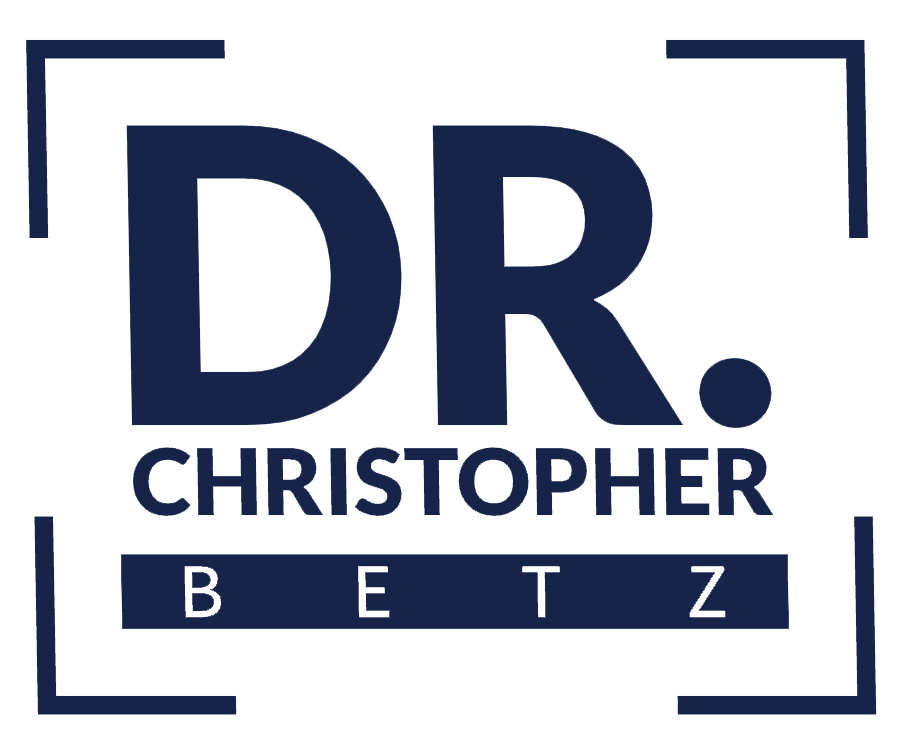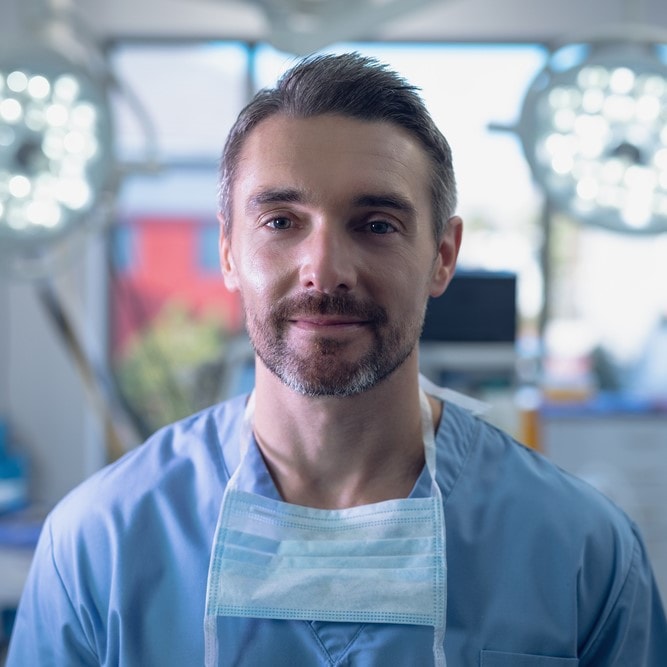KNEE
ACL Tear (Anterior Cruciate Ligament)
ACL Tear
The diagram to the right illustrates how an ACL can be surgically reconstructed.
The knee joint consists of three bones: femur (thigh bone), tibia (shin bone), and patella (knee cap). There are four ligaments that hold these bones together and provide stability:
- Collateral Ligaments: The medial (inside of the knee) and lateral (outside of the knee) collateral ligaments control sideways motion within the knee.
- Cruciate Ligaments: The anterior (front) cruciate ligament (ACL), and the posterior (rear) cruciate ligament cross each other to make an ‘X’. They control the forward and backward motion of the knee.
Most ACL tears are the result of a specific trauma and are associated with pivoting or twisting motions. Patients often describe a ‘popping’ feeling or sound when the injury occurs.
ACL injuries are measured by grade:
- Grade 1: There is mild damage to the ACL and it is only slightly stretched; the ACL is still able to maintain joint stability.
- Grade 2: The ACL is stretched and becomes loose, also referred to as a partial tear; the ACL can maintain minimal joint stability. Partial ACL tears are rare.
- Grade 3: The damage to the ACL has severed it into two pieces, also known as a complete tear; this leaves the knee joint unstable.
ACL tears are commonly seen in athletes who play contact sports such as football, basketball, field hockey, and soccer, but can occur during any physical activity.
Symptoms:
- Popping sound/sensation at the time of the injury
- Joint instability
- Inability to bear weight
- Swelling
- Grinding sensation
- Joint stiffness
- Pain with:
- Weight-bearing activities such as walking and standing
- Movement
- Daily activity
If your symptoms last longer than 2 weeks and interfere with daily activity you should consult your primary care physician for a referral.
What To Expect During Your Appointment:
During your appointment, Dr. Betz will perform a physical exam to test range of motion in the knee and the leg strength. In-office imaging may be done or an MRI may be set up to diagnose the cause of your pain. Once the results of your imaging come back, Dr. Betz will provide treatment options and help you decide the course of action that is best for you.
Treatment
Dr. Betz performs an in-office exam on the patient to check for an injury to the ACL.
Non-Surgical Options:
ACL tears require surgery in order to heal, however non-surgical treatments may help the elderly and those with low activity levels increase comfort levels and avoid surgery.
- Rest
- Bracing: bracing the joint will help provide the stability that the ACL no longer provides.
- Medication: non-steroidal anti-inflammatories are often prescribed to minimize swelling and pain.
- Physical Therapy: strengthening the knee will help relieve pain and prevent further injury. Stretching is also performed to help regain mobility.
- Injections: If the other non-surgical treatments fail, Dr. Betz can use injections to help reduce pain.
- Steroid Injection (Cortisone): steroids are proven to be very effective at reducing inflammation and pain when injected directly into the joint space.
- Platelet Rich Plasma (PRP): your own blood is used to extract platelet-rich plasma, which is then injected into your knee joint. The platelets within the plasma stimulate the body to repair itself.
Surgical Options:
Once torn, an ACL cannot be repaired. Instead, the ligament is replaced using a tissue graft. A graft is a piece of living tissue that is transplanted in the patient.
Two sources of tissue grafts:
- Autograft: autograft tissues are harvested from the patient’s own body. The tissue is usually from the patellar tendon, hamstring, or quadriceps. Autografts decrease the risk of an immune system response and bacterial infections. However, autografts create a second surgical sight which can delay recovery. The literature demonstrates that allografts produce better results for patients under the age of 35. After the age of 35, the post-operative differences between patients receiving autografts and those receiving allografts are negligible.
- Allograft: allograft tissues are harvested from a cadaver. The tissue is usually from the patellar tendon, hamstring, or quadriceps. Allografts decrease surgical time, post-operative pain, joint stiffness and atrophy, and eliminate the need for a second surgical site. However, allograft tissue cannot be completely sterilized, causing an increased risk of bacterial infection. Cadaver donors are screened extensively before tissues are harvested and once harvested, the tissues are cleaned and frozen in liquid nitrogen.
Three standard types of graft:
- Patellar Tendon Bone-Tendon-Bone (BTB) Graft: BTB grafts consist of the middle third of the patella tendon and bone blocks, from the tibial tubercle and patella, on each end of the tendon. The bone blocks are attached to the femur and tibia using a specific type of screw called an interference screw. Interference screws provide immediate stabilization which allows for decreased post-operative pain and accelerated rehabilitation.
- Hamstring Tendon Graft: there are several variations of hamstring grafts. Generally, Dr. Betz folds the two ends of the harvested hamstring tendons into a quadruple stranded graft. This configuration allows for the strongest tensile construct for repair. Hamstring grafts have shown similar post-operative success rates as other graft choices and can be associated with lower post-operative morbidity. The hamstrings are fixed into the bone tunnels via the use of either an interference screw or a cortical button and immediate weight-bearing is allowed.
- Quadricep Tendon Graft: quadricep tendon grafts combine soft tissue-to-bone and bone-to-bone grafting techniques. The graft consists of a strip of the end of the quadricep tendon and a bone block, from the top of the patella, on one end of the graft. The bone end of the graft is typically fixed to the femur with an interference screw and the soft tissue end is fixed to the tibia in a similar fashion. Quadricep tendon grafts are often used for ACL revision cases.
Dr. Betz tailors graft choices to the individual based upon the patient’s needs. Recovery after ACL reconstruction can be lengthy and can take up to six months before an athlete is ready to return to his or her sport. Every tear and patient is different; however, most ACL reconstructions can be performed arthroscopically. For more information on arthroscopic surgery please see “Arthroscopic Surgery”.
Meniscal Tear
Meniscal Tear
The diagram to the right illustrates the anatomy of the menisci of the knee joint.
The meniscus is a crescent-shaped cartilage that acts as a shock absorber between the femur (thigh bone) and tibia (shin bone). Each knee has two menisci: medial (inner) and lateral (outer). There is an additional type of cartilage in the knee joint called articular cartilage which is a smooth, white, glistening surface that covers the ends of the bones. The articular cartilage provides lubrication and as a result, there is very little friction when the joint moves. These cartilages can tear and cause pain either by degenerative wear-and-tear or an acute injury. Acute injuries resulting in meniscal tears often cause damage to other structures in the knee, such as the anterior cruciate ligament (ACL).
ACL tears are associated with squatting and twisting motions as well as direct impact to the knee. Athletes who are most susceptible to ACL tears are those who play contact sports like football, basketball, soccer, field hockey, and ice hockey.
Symptoms:
- Popping: sensation when the injury occurs
- Stiffness that increases 2 to 3 days after injury
- Swelling that increases 2 to 3 days after injury
- Catching sensation
- Weakness
- Decreased range of motion
- Pain with:
- Daily activity
- Walking
- Bending the knee
- Sleeping on the affected side
If your symptoms last longer than 2 weeks and interfere with daily activity you should consult your primary care physician for a referral.
What To Expect During Your Appointment:
During your appointment, Dr. Betz will perform a physical exam to test range of motion in the knee and the leg strength. In-office imaging may be done or an MRI may be set up to diagnose the cause of your pain. Once the results of your imaging come back, Dr. Betz will provide treatment options and help you decide the course of action that is best for you.
Treatment
Dr. Betz performs an in-office exam on the patient to test range of motion in the knee joint.
Non-Surgical Options:
Course of treatment will depend on the size, shape, and location of the meniscal tear; some tears can heal with non-surgical treatment.
- Rest
- Bracing: bracing the joint will help provide the stability that the ACL no longer provides.
- Medication: non-steroidal anti-inflammatories are often prescribed to minimize swelling and pain.
- Physical Therapy: strengthening the knee will help relieve pain and prevent further injury. Stretching is also performed to help regain mobility.
- Injections: If the other non-surgical treatments fail, Dr. Betz can use injections to help reduce pain.
- Steroid Injection (Cortisone): steroids are proven to be very effective at reducing inflammation and pain when injected directly into the joint space.
- Platelet Rich Plasma (PRP): your own blood is used to extract platelet-rich plasma, which is then injected into your knee joint. The platelets within the plasma stimulate the body to repair itself.
Surgical Options:
If non-surgical treatment methods fail to improve pain, Dr. Betz will discuss surgery as an option. Each patient and tear is different, but most tears can be treated arthroscopically. For more information on arthroscopic surgery please see “Arthroscopic Surgery”.
Arthritis
Arthritis
The diagram to the right illustrates two types of knee arthritis compared to a non-arthritic, healthy knee.
The knee joint consists of three bones: femur (thigh bone), tibia (shin bone), and patella (knee cap). Between the femur and tibia is a piece cartilage called the meniscus; this cartilage acts as a shock absorber. Arthritis is a disease that breaks down cartilage over time.
Three types of arthritis that affect the knee:
- Osteoarthritis (OA): OA is the most common form of knee arthritis. It is a degenerative disease of the joint, also known as wear-and-tear arthritis that usually affects middle-aged and older patients.
- Rheumatoid Arthritis (RA): RA is an autoimmune disease in which the immune system attacks normal tissues in the joints such as the lining of the joints, cartilage, and bone. RA is the most common type of autoimmune arthritis, usually affecting both sides of the body equally. RA causes pain and swelling of joints and can affect patients of any age.
- Post-Traumatic Arthritis: Post-traumatic arthritis is similar to OA and can develop years after an injury to the knee.
Symptoms:
- Stiffness
- Swelling
- Buckling/locking sensation
- Weakness
- Decreased range of motion
- Pain is worse in the morning
- Pain with:
- Daily activity
- Climbing stairs
- Change in weather
If your symptoms last longer than 2 weeks and interfere with daily activity you should consult your primary care physician for a referral.
What To Expect During Your Appointment:
During your appointment, Dr. Betz will perform a physical exam to test range of motion in the knee and the leg strength. In-office imaging may be done or an MRI may be set up to diagnose the cause of your pain. Once the results of your imaging come back, Dr. Betz will provide treatment options and help you decide the course of action that is best for you.
Treatment
Dr. Betz performs an in-office exam on the patient to test range of motion in the knee joint.
Non-Surgical Options:
- Rest
- Supportive Devices: in the early stages of the disease, the use of shoe inserts and/or braces may help relieve pain. In later stages, the use of a cane may also help relieve some of the stress on the joint.
- Medication: non-steroidal anti-inflammatories are often prescribed to minimize swelling and pain. There are also specific medications to help reduce the effects of RA.
- Physical Therapy: strengthening the knee will help relieve pain. Stretching is also performed to help regain mobility.
- Injections: If the other non-surgical treatments fail, Dr. Betz can use injections to help reduce pain.
- Steroid Injection (Cortisone): steroids are proven to be very effective at reducing inflammation and pain when injected directly into the joint space.
- Lubricating Injections: lubricating injections use a synthetic joint fluid (such as hyaluronic acid) to help smooth the cartilage of the knee which can relieve pain associated with arthritis.
- Platelet Rich Plasma (PRP): your own blood is used to extract platelet-rich plasma, which is then injected into your knee joint. The platelets within the plasma stimulate the body to repair itself.
Surgical Options:
If non-surgical methods fail to improve pain, Dr. Betz will discuss surgery as an option. Each patient is different, therefore surgical plans vary greatly depending on the patient’s needs and stage of arthritis.


